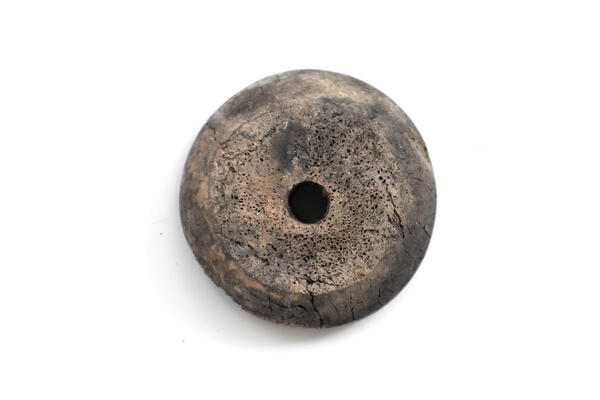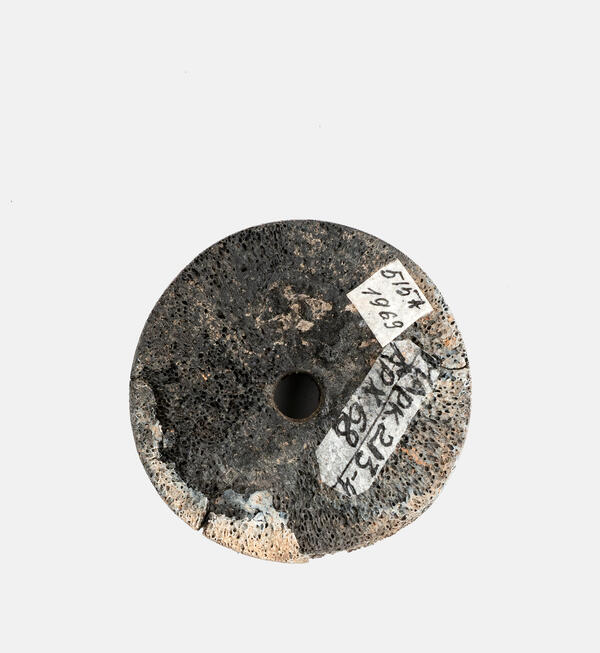The exhibition of the Chelyabinsk State Historical and Archaeological Museum-Reserve “Arkaim” presents a bone spindle whorl. It was found at the Alandskoye settlement, located six kilometers southeast of the village of Alandskoye and 2.5 kilometers northeast of the village of Krasny Ogorodnik in Kvarkensky district of Orenburg region. The site is located on the left bank of the Suunduk River near the confluence of its left tributary — the small steppe river Solonchanka. From the north, the valley of the Suunduk River is surrounded by hills covered with pine and birch woods of the relict Alandsky forest.
The bone spindle whorl has the shape of a truncated hemisphere with a round through hole in the center. The flat surfaces show the porous structure of the bone. The edge of the larger surface is cut along the perimeter forming a low facet on the lateral surface. In terms of color, the surfaces range from dark gray to black, one of the edges is white.
Spindle whorls were most often made from the walls of ceramic vessels, while molded ones are less common. In addition, stone and bone were used as materials for making the disks. Such finds are traditionally attributed to tools of textile production. The spindle whorl could be used as a weight. It was put on a spindle for stability and even rotation. Disks with holes made of bone could also be used as polishing tools for ceramics and leather or as parts of horse harness — distributors of additional harness head straps.
Such bone disks are widespread in many steppe
cultures of the late 3rd — early 2nd millennium BC, related to the Sintashta
and Petrovo cultures. They are widely represented in the materials of the
Abashevo, Pokrovo (Early Srubnaya) and Multiroller ceramics (Babino) cultures.
By the end of the 3rd millennium BC, a certain standardization of manufacturing
methods of these items and a similar approach to solving specific technological
issues were established over a vast territory. All this testifies to the fact
that the cultural communities of the late Middle and early Late Bronze Age
distinguished bone carvers along with masters of other trades.




